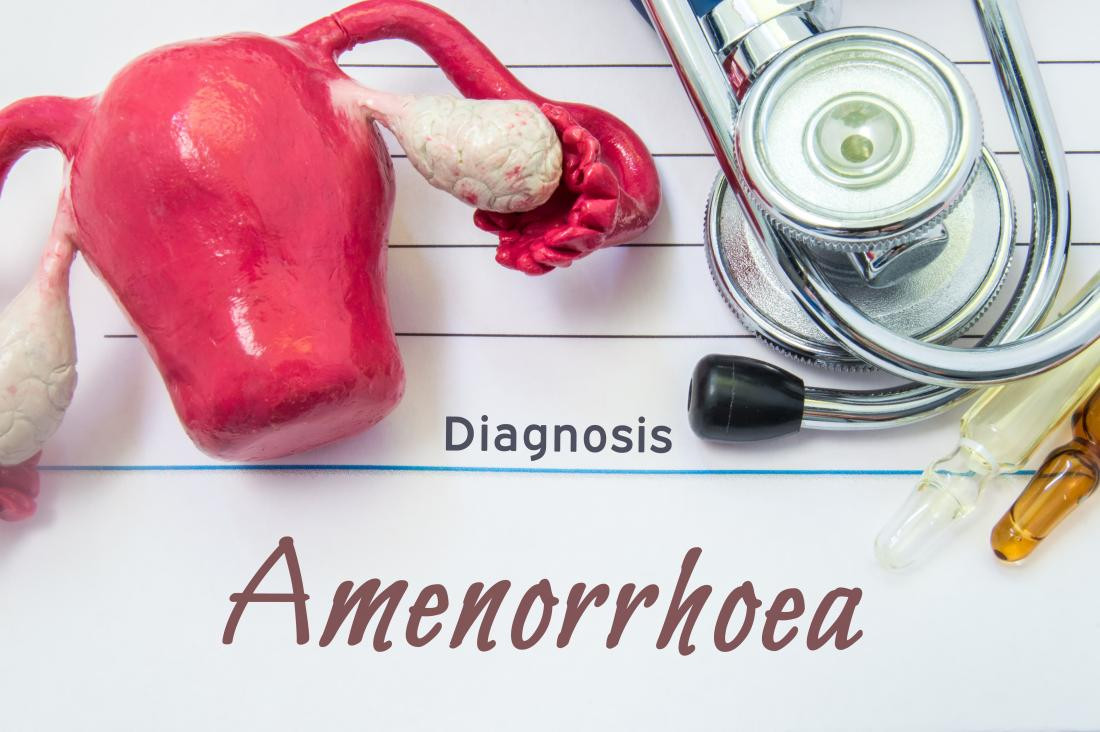Definition
Amenorrhea is a medical term for the absence of menstruation after puberty, when not pregnant and before menopause. Unlike irregular menstruation, amenorrhea means you do not have menstrual periods at all. Although it is not a disease, it should be discussed with a doctor as it might indicate an underlying health issue.
There are two types of amenorrhea: primary and secondary. Primary amenorrhea occurs when a woman does not experience menarche (first menstruation) until the age of 15-16 years. Secondary amenorrhea occurs when a woman had a regular menstrual cycle but stopped and has not menstruated for three months or more.
Lactational amenorrhea is a type of secondary amenorrhea that occurs when a woman does not menstruate due to breastfeeding. It typically lasts for about the first 6 months after childbirth but can vary depending on the duration of breastfeeding and individual hormonal levels.
Lactational Amenorrhea Method (LAM)
Lactational amenorrhea is common among breastfeeding mothers and generally does not require special treatment as long as the mother continues to breastfeed. LAM is also a common contraceptive method used postpartum, though it is less effective than other contraceptive methods.
LAM is a natural contraceptive method based on exclusive breastfeeding for the first 6 months without additional foods or drinks. It is a short-term contraceptive method because it lasts approximately 6 months. Success with LAM depends on the mother's knowledge, which can be obtained through counseling or reliable sources about this method.
Causes
During breastfeeding, significant hormonal changes occur due to post-delivery conditions.
Gonadotropin-releasing hormone (GnRH), the pituitary gland, and the hypothalamus gland, which is a gland in the brain that regulates and processes sex hormones, as well as signals the breasts to produce breast milk, all play important roles in this condition.
The process of sucking during breastfeeding prompts the hypothalamus to reduce GnRH production, resulting in decreased secretion of luteinizing hormone (LH) and estrogen from the pituitary gland.
Prolactin, a hormone that is involved in the production of breast milk, is going to increase in the meantime. The hormones LH and estrogen play a significant role in menstruation. A reduction in the production of the hormones LH and estrogen, in combination with an increase in prolactin from breastfeeding, can have an impact on the body's health, including the inability to menstruate on a monthly schedule.
Risk Factor
Lactational amenorrhea risk factors include direct breastfeeding or pumping the breasts in breastfeeding mothers. Both can send signals to the brain, influencing a person's menstrual cycle.
Risk Factors for Secondary Amenorrhea
For secondary amenorrhea beyond breastfeeding, risk factors include:
- Stress
- Poor nutrition
- Extreme weight changes, including significant weight gain or loss
- Chronic diseases, such as ovarian tumors or pituitary gland disorders
Symptoms
Symptoms of lactational amenorrhea are generally clear, such as no menstruation for three consecutive months in a breastfeeding mother. Additional symptoms may include:
- Hot flashes
- Nipple discharge without breastfeeding
- Vaginal dryness
- Headaches
- Blurred vision
- Acne
- Excessive hair growth on the face and body
Diagnosis
If you had a regular menstrual cycle before pregnancy and childbirth and then decided to breastfeed, you will not typically have a menstrual cycle every month. Only postpartum blood will come out after giving birth in the first 40 days, which is also normal.
Secondary Amenorrhea
If you previously experienced regular menstrual cycles and your period abruptly stopped for no apparent reason, you should see a doctor about other forms of secondary amenorrhea. In addition to the primary complaint, the doctor will inquire about the patient's lifestyle, past medical history, history of certain medications, and any accompanying complaints.
The doctor will then conduct a physical examination as well as any necessary tests. Pregnancy tests, blood laboratory tests to check hormone levels and detect abnormalities in certain glands, genetic tests, and an MRI if the doctor suspects a problem with the pituitary gland or hypothalamus are all options for diagnosing secondary amenorrhea.
Management
Lactational amenorrhea is a normal condition in breastfeeding mothers, therefore it does not require any special treatment or therapy. Continue to provide exclusive breastfeeding in accordance with WHO recommendations, specifically during the first six months of life, without water or other additional food.
However, for secondary amenorrhea caused by causes other than breastfeeding, the usual treatment is as follows:
- Losing weight through appropriate dietary changes and regular exercise (if the cause of secondary amenorrhea is obesity).
- Increasing weight through appropriate dietary changes (if the cause of amenorrhea is weight below normal BMI)
- Effective stress management.
- Hormone therapy following the advice of the treating doctor.
- Surgery is usually only performed if there is a tumor in the pituitary gland or if there are genetic or chromosomal issues.
- Administration of calcium and vitamin D supplements to strengthen bones and prevent complications of osteoporosis
Complications
Lactational amenorrhea is not life-threatening and has no complications to be concerned about. Because menstruation usually returns after breastfeeding ends. Other cases of secondary amenorrhea with no identifiable cause should be evaluated immediately because they can increase the risk of osteoporosis and infertility.
Prevention
Lactational amenorrhea is a very common condition to experience if you definitely want to breastfeed; there is no specific way to prevent it.
However, you can take the following steps to avoid secondary amenorrhea in general:
- Healthy diet
- Adequate sleep
- Hydration
- Avoid excessive exercise
- Track menstrual cycles every month
When to See a Doctor?
See a doctor immediately. If you have severe vision changes, greenish and foul-smelling vaginal discharge after giving birth, difficulties with balance, abnormal body hair growth, breast swelling and obstruction, or other breastfeeding problems, you can also see an obstetrician or lactation counselor.
Looking for more information about other diseases? Click here!
- dr Anita Larasati Priyono
La Leche League International - Menstruation. (2021). Retrieved 9 December 2022, from https://www.llli.org/breastfeeding-info/menstruation/
Mayo Clinic - Amenorrhea (2021). Retrieved 9 December 2022, from https://www.mayoclinic.org/diseases-conditions/amenorrhea/symptoms-causes/syc-20369299
My Health Alberta - Lactation Amenorrhea Method (2018). Retrieved 9 December 2022, from https://myhealth.alberta.ca/sexual-reproductive-health/birth-control/natural-methods/lactation-amenorrhea
WebMD - Amenorrhea (2022). Retrieved 9 December 2022, from https://www.webmd.com/infertility-and-reproduction/guide/absence-periods
WebMD - What is the Lactational Amenorrhea Method of Birth Control? (2022). Retrieved 9 December 2022, from https://www.webmd.com/sex/birth-control/lactational-amenorrhea-birth-control-method-overview











